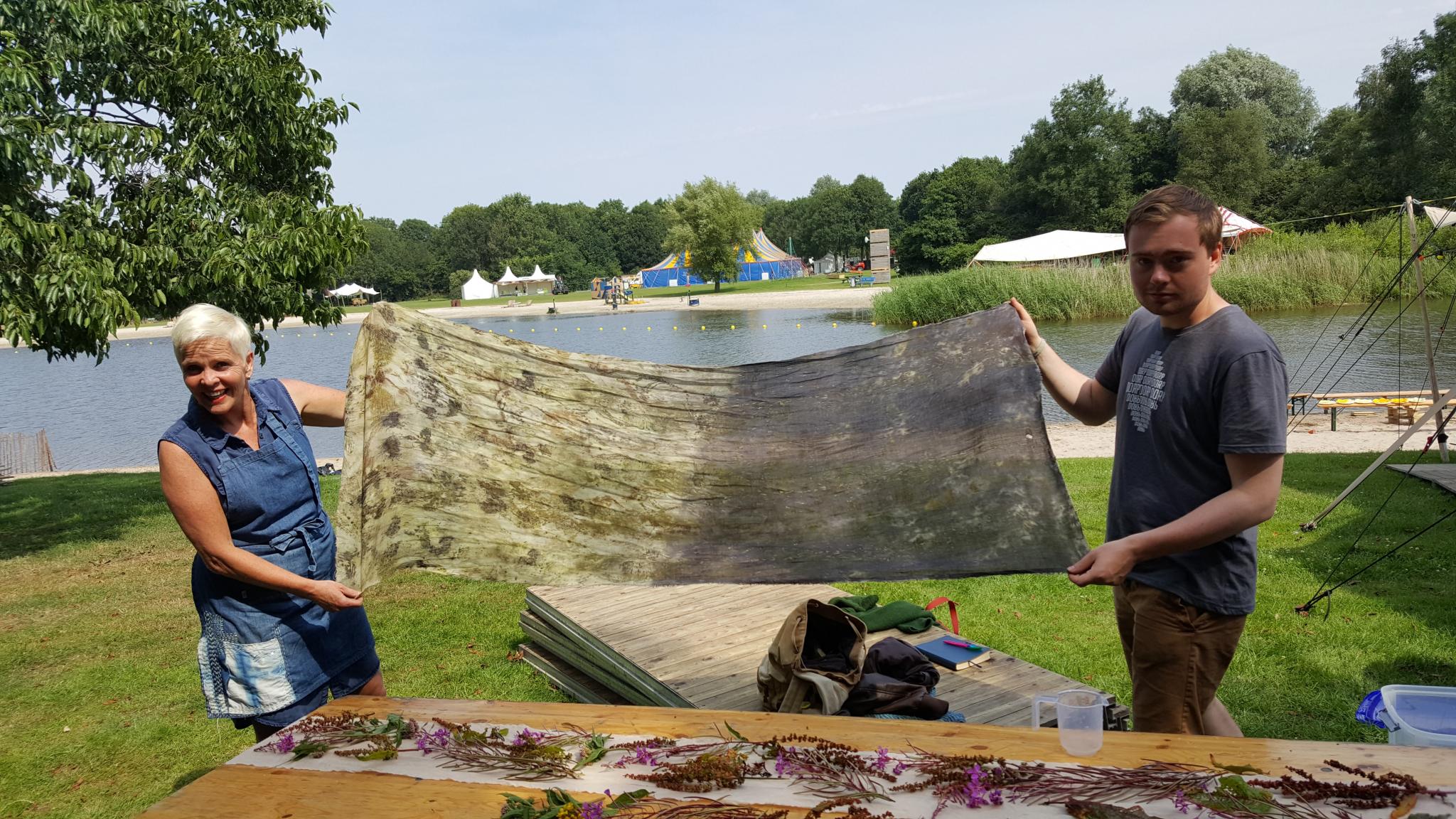Sustainability focus: Materials/Waste

What is Eco-print?
Eco print is eco-friendly dyeing. This can be for textiles of paper.
How do you make this?
With flowers and herbs I found in the nature. I pick them myself. I dye cotton, wool, silk and linen. Natural fibers. Wool and silk are easiest to dye, but most expensive fibers. I cook the cotton in alum to prepare it. After that, I dye them. Often, I also dye with the water I have cooked vegetables with. In this way, nothing goes to waste. There are so many ways to dye with natural colors. And it also depends on the water you use when dye. For example: if you dye with metal water, the color gets dark, whilst with vinegar water it becomes light.
Why do you want to dye with eco dye?
I advocate slow design. After being in the chemical dying business, I was fed up with it. If found the colors boring and the prices were absurd low. I want to make dying a part of the circular economy. And the process of natural dying (eco print) is very fulfilling. It is almost mind fullness.
After chemical dyeing became possible, we totally forgot about the natural dying. And with this, all the knowledge we had is lost as well. Such a shame, knowledge that was given from one generation to another, totally last. Because dying was a complicated process, the Gildes (Guilds) kept the recipes a secret and didn’t write them down.
Funny story – de “Kruikenzeikers uit Tilburg” (The Jar pisser from Tilburg)
Urine was also used in the dye Guilds. For example to clean the wool but also to dye with. In Tilburg, the men peed in the jars that were put on the street in the morning. After the jars were picked up, women would enter the city streets again. They of course didn’t want step into the pee of men with their long skirts. Can it get more circular?

